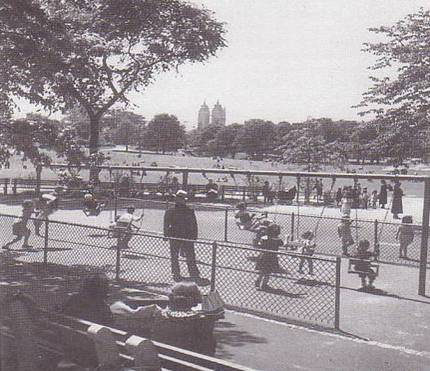|
When Robert Moses was appointed to the position of Parks Commissioner in 1934, the effects of years of neglect had rendered Central Park in a deplorable state. Clearly, it was time for much-needed changes in Central Park and Moses would be the one to make them. Although Moses wanted to revive the Park to its original glory, he cared very little for the natural, picturesque, and artistic qualities of Central Park. Instead, Moses believed that Central Park should be a place of recreation and activity rather than contemplation. Although Moses at times was highly criticized by environmentalists and preservationists, he was not deterred from making significant changes to Central Park.(27)
While some of Moses changes were met with opposition, some of them did much to improve the aesthetic appearance and function of the park. Some of his improvements included planting fresh grass, resurfacing playgrounds and tennis courts, repaving walks and roads, and repairing drinking fountains and rest stations.(28) Moses also made several additions to the Park including the Wollman Rink, new playground equipment, baseball diamonds, handball courts, wading pools, and a restaurant called Tavern on the Green.(29)
Robert Moses resigned as Parks Commissioner in 1960. The effects of his tenure as Parks Commissioner on Central Park are mixed. The construction of the Wollman Rink, wading pools, playgrounds, baseball and soccer fields, for example, meant that New Yorkers had places and facilities to go to where they could participate in a wide range of outdoor activity, which was a good way to keep active and healthy. By contrast, Central Park preservationists wanted to maintain the Park as close to Olmsteds vision as possible; a place to go to relax and to get away from the hustle and bustle of the city.
In the years immediately following his resignation from 1960 to 1978, Central Park spiraled into a period of neglect. This was in large part due to the fiscal problems of this period and the shortage of money for park maintenance that resulted from it. It was not until the 1980s and the establishment of Central Park Conservancy that the Park was restored.(30)

 The above picture is an example of the types of playgrounds Robert Moses constructed throughout The above picture is an example of the types of playgrounds Robert Moses constructed throughout
Central Park. (Picture taken from, The Park and the People, p. 452.)
|